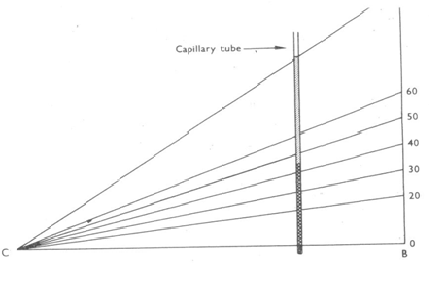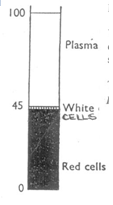Solution-Biological markers–nutritional status of an
Biological Markers – Nutritional Status of an individual
Blood And The case of the mixed up case files
Whats going on around here
You have been handed a written report on an individual, but the labels on the biological samples have been all mixed up. Your task is to determine if one of the blood samples might fit with the subject.
The individual presented with fatigue, weakness, dizziness, cold feet, weight loss, skin infections, itchy ear, decreased vision, change in bowel movements and sexual dysfunction.
Match?
- Does the sample you have seem to match this case?
- What would you expect to find in the blood and why?
Some of the Questions you will need to ask will relate to:
- What do these symptoms reveal about the body?
- What are the possible conditions that would lead to these symptoms?
- If it were any one of those conditions, what would change in the blood Specifically in relation to haematocrit and glucose?
- What further tests would you want to do?
- How does the data from your blood sample relate to the symptoms?
- How confident are you that your sample is or is not a possible match?
BLOOD ANALYSIS
Today we will undertake two experiments on a sample of your own blood we will measure how much glucose is in your blood, and how much or your blood is made up of red cells.
when dealing with blood there are a few things to remember
• Only deal with your own blood. not anyone else’s.
• Make sure anything that has been in contact with blood is put in the CIN-HIN provided, not in the ordinary bin.
• lf is doubt ask ?

Procedure
1. Wash your hand with warm water.
2. Prick the side of your finger with a sterile lancet
3. Squeeze your finger. discard the first drop of blood. then touch the heparinised capillary tube onto the blood on your finger
4. Seal one cod of the tube with plasticine put in the centrifuge with the plasticine end towards the outside or the circle.
S. Spin fur 3 minutes.
6. Measure, your haematocrit on the haematocrit reader.
7. Write your results in the space below:
Measurment of Red Blood Cells

When blood is spun in a centrifuge, the red cells pack themselves into the bottom of the centrifuge tube, leaving plasma at the top. In between the two layers you may be able the see a very small layer called the “be coat” which is made up of the white cells.
The percentage of the blood that is made up of red cells is called the haematocrit or White packed cell volume. The normal haematocrit is 40%-47%.
For those of you who did not collect data for the Blood PBR, you can use the following data:
Haematocrit = 37%
Blood Glucose = 6.5 mmol/L
